MP Board Solutions for Class 10 Science Chapter 5 – Life Processes
MP Board Solutions for Class 10 Science Chapter 5 – Life Processes are essential for understanding key Biology concepts in the MPBSE curriculum. These well-structured answers help students grasp topics like nutrition, respiration, transportation, and excretion in organisms. Designed as per the latest syllabus, these solutions strengthen conceptual clarity and improve exam preparation. Ideal for revision and practice, they encourage logical thinking and scientific understanding, making them a valuable study tool for scoring well in Class 10 Science exams.
MP Board Solutions For Class 10 Science – Life Processes – Exercise Images
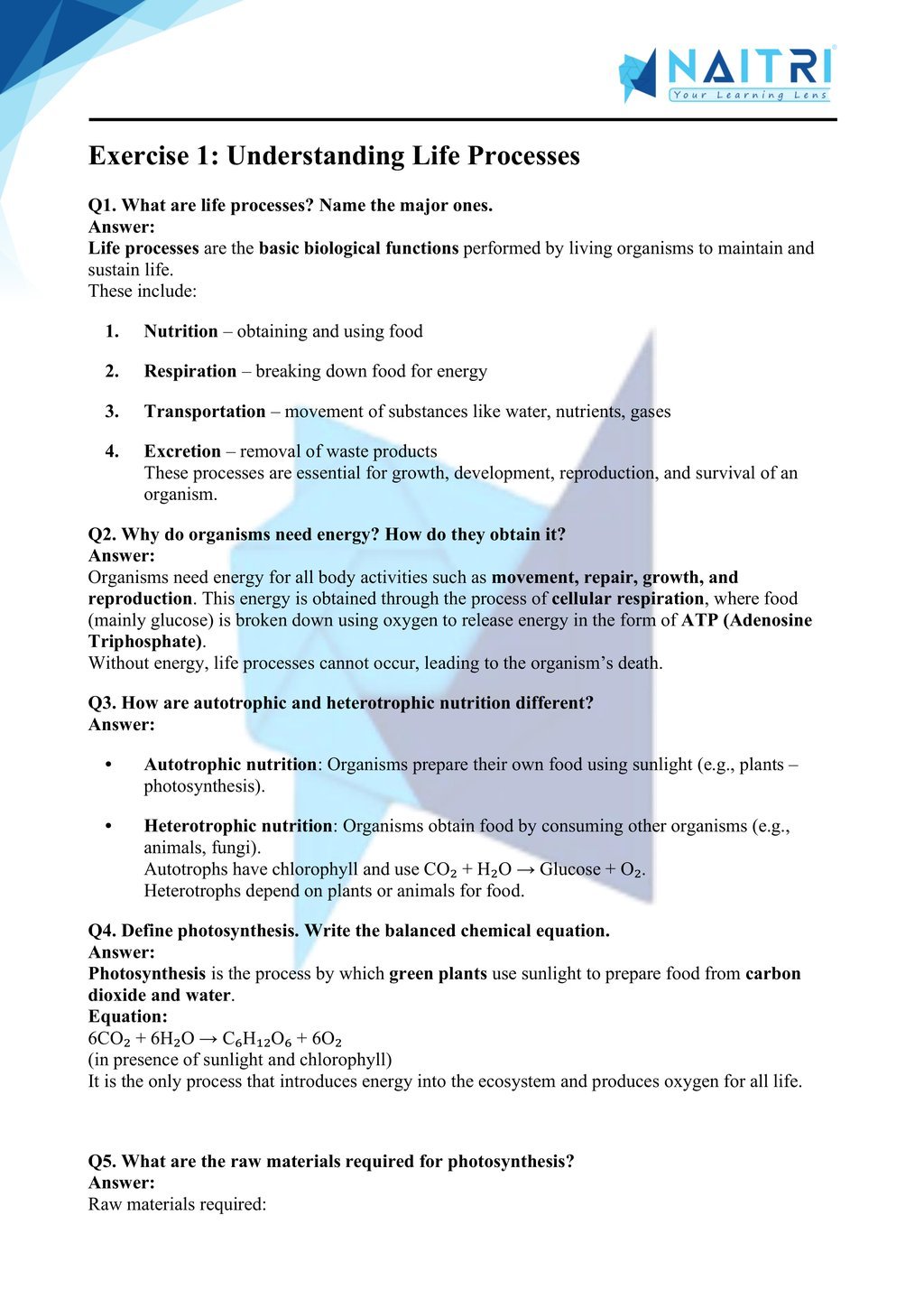
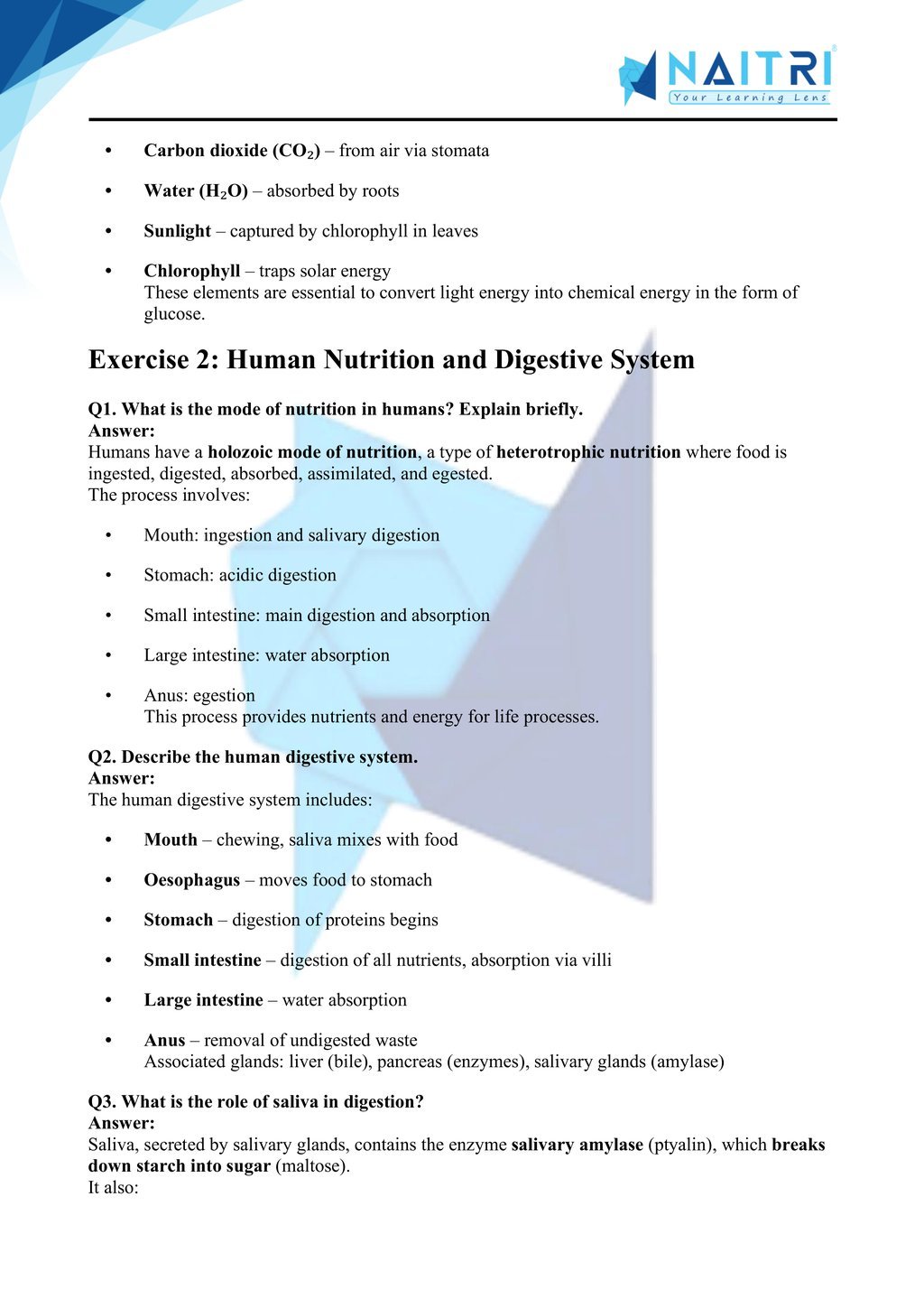
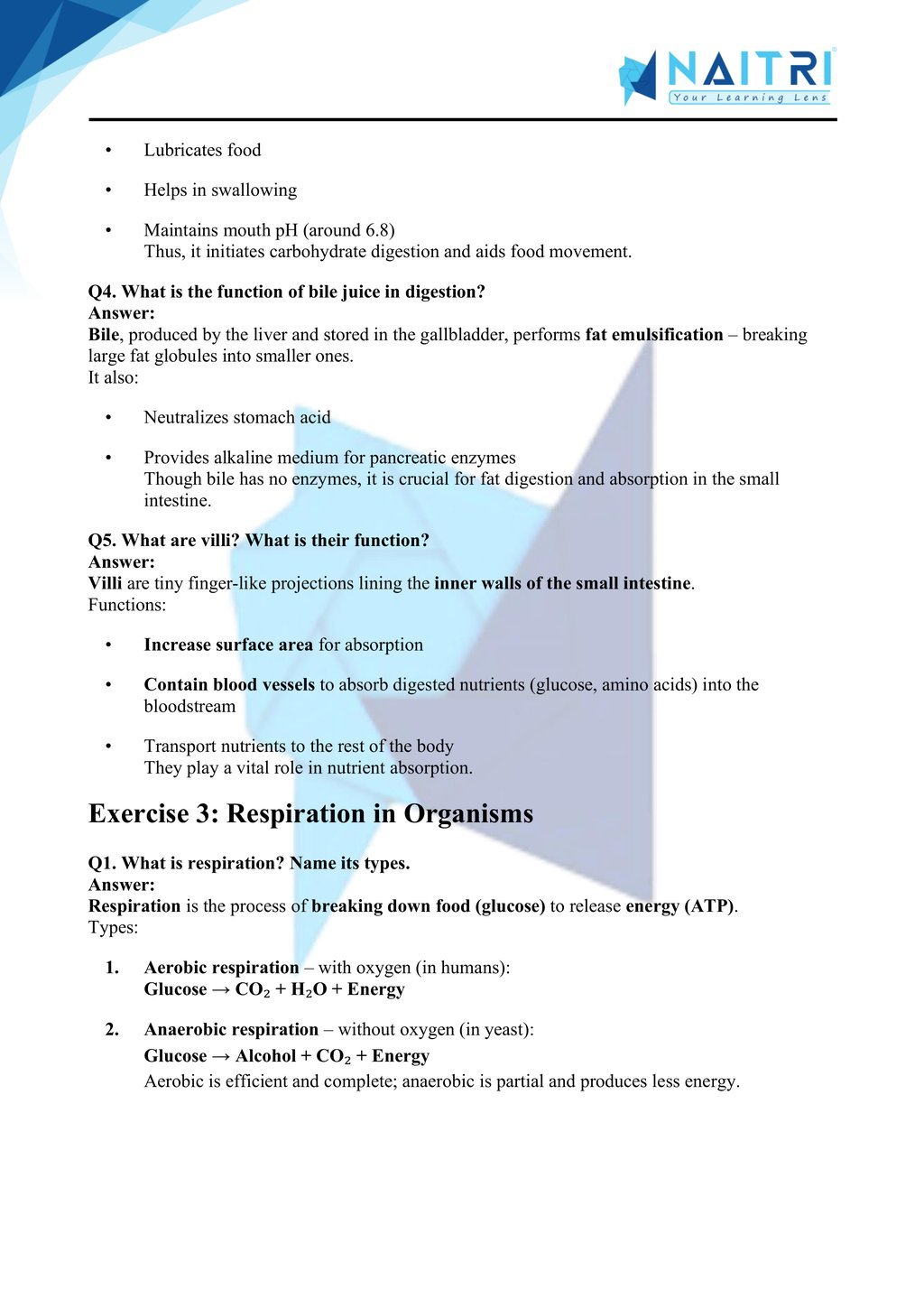
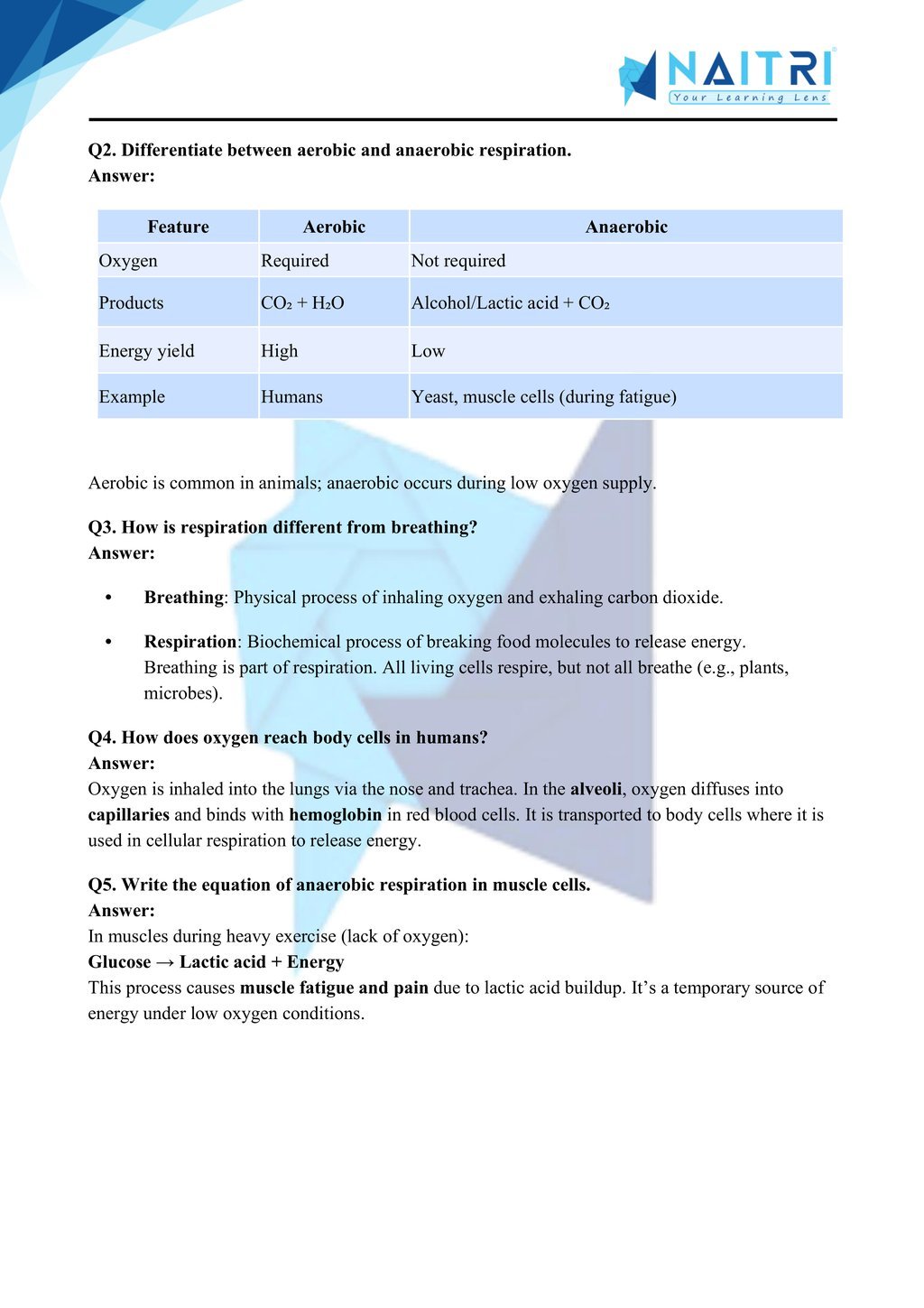
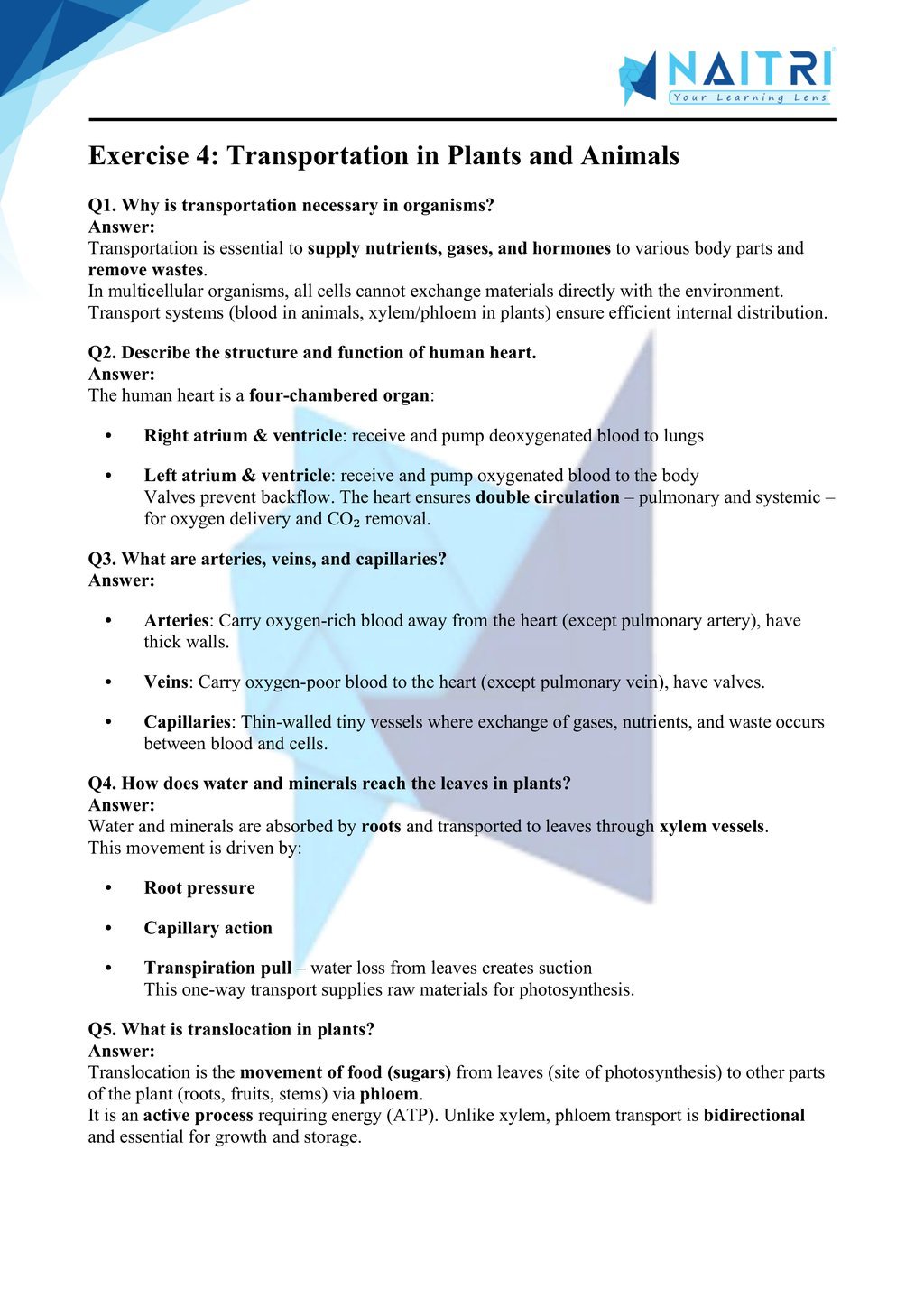
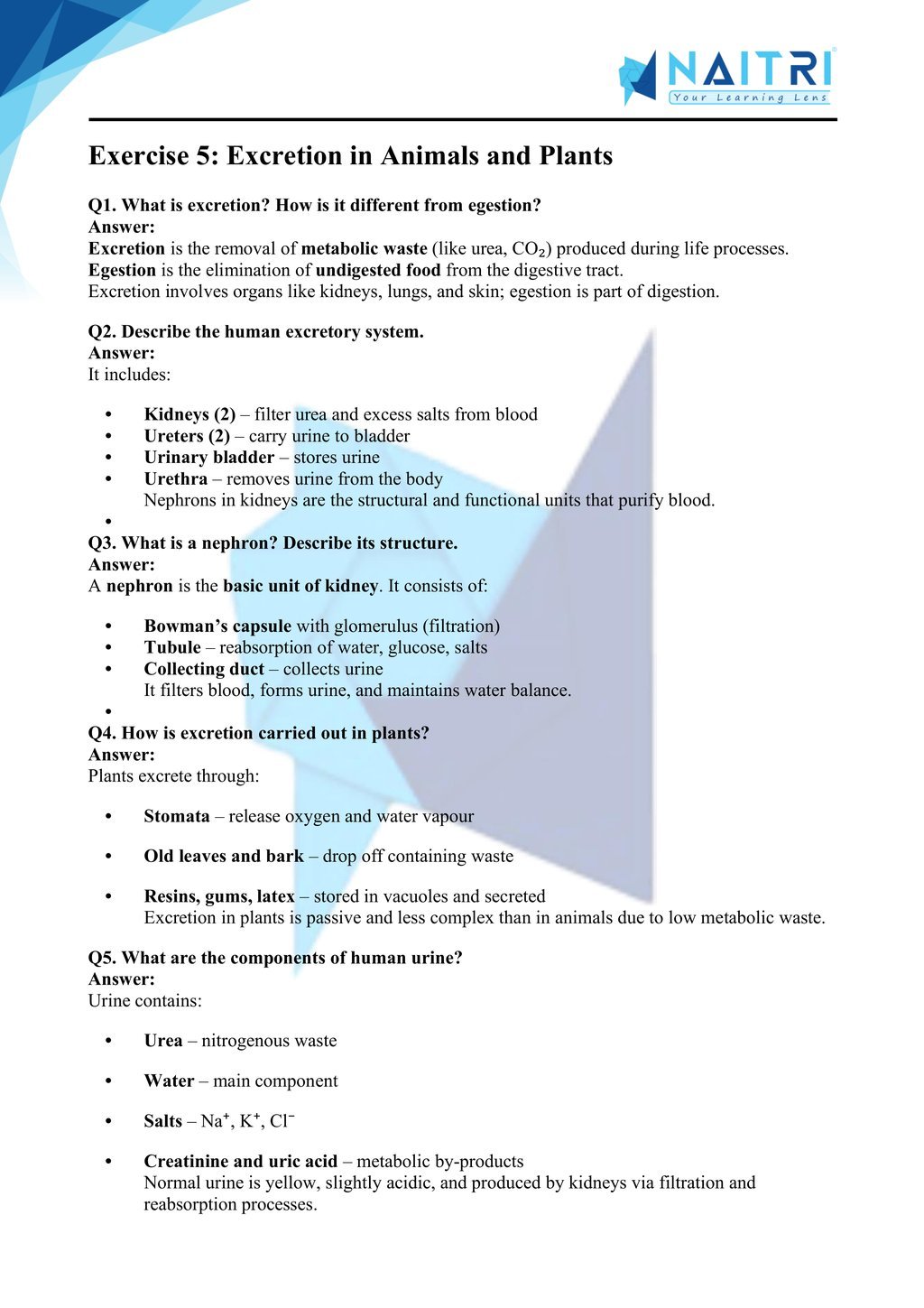
Experience Science Like Never Before – With AR!
Understanding Life Processes is now more exciting and immersive! With the NAITRI App, you can explore complex science concepts through Augmented Reality (AR). Visualize digestion, respiration, circulation, and excretion working inside living organisms — right in front of you. Our AR-powered lessons make learning interactive, 3D, and fun, helping you retain concepts better and enjoy every topic.



Visualize . Interact . Understand . The future of learning is here
Life Processes – Important Questions with Answers
1. Define nutrition and its two types with examples.
Answer: Nutrition is the process by which organisms obtain food, nutrients, and energy for growth, maintenance, and repair. Two types: Autotrophic (plants making food via photosynthesis) and heterotrophic (animals consuming plants or other animals for nutrients).
2. Explain photosynthesis with chemical equation and site of occurrence.
Answer: Photosynthesis is the process by which green plants use sunlight to convert carbon dioxide and water into glucose and oxygen, occurring in chloroplasts. Equation: 6CO₂ + 6H₂O → C₆H₁₂O₆ + 6O₂.
3. Describe the role of chlorophyll in photosynthesis.
Answer: Chlorophyll, the green pigment in chloroplasts, traps sunlight energy and uses it to power photosynthesis, converting light energy to chemical energy stored in glucose molecules.
4. What are stomata and their function in photosynthesis?
Answer: Stomata are microscopic pores on leaf surfaces facilitating gas exchange. They allow CO₂ to enter and O₂ and water vapor to exit during photosynthesis and respiration, maintaining plant homeostasis.
5. Differentiate between aerobic and anaerobic respiration.
Answer: Aerobic respiration uses oxygen to completely break down glucose, releasing energy (~38 ATP per glucose), carbon dioxide, and water. Anaerobic occurs without oxygen, producing less energy (~2 ATP) and products like lactic acid or ethanol.
6. Write the equation for aerobic respiration in humans.
Answer: Aerobic respiration breaks down glucose with oxygen to release energy, carbon dioxide, and water. Equation: C₆H₁₂O₆ + 6O₂ → 6CO₂ + 6H₂O + energy (~38 ATP).
7. Explain human respiratory system—main organs and functions.
Answer: The respiratory system includes the nasal cavity, pharynx, larynx, trachea, bronchi, bronchioles, and alveoli. It filters, warms, humidifies air, allows gas exchange in alveoli, and expels CO₂.
8. What is transpiration? Mention its significance.
Answer: Transpiration is the loss of water vapor from plant aerial parts, mainly via stomata. It helps in nutrient transport, cooling leaves, and maintaining water cycle and root pressure for absorption.
9. Describe alimentary canal in humans.
Answer: The alimentary canal includes the mouth, esophagus, stomach, small and large intestines. It facilitates digestion, absorption of nutrients into blood, and elimination of undigested waste as feces.
10. Explain digestion and absorption in small intestine.
Answer: The small intestine is where most digestion and absorption occur. Digestive juices break down proteins, fats, and carbs. Villus-lined walls absorb nutrients into the bloodstream.
11. Define excretion and its significance.
Answer: Excretion is the process by which metabolic wastes and excess substances are removed from the body. It maintains homeostasis by regulating water, salts, and eliminating nitrogenous wastes like urea through kidneys.
12. Describe structure and function of the human kidney.
Answer: Each kidney contains nephrons—structural and functional units. They filter blood, reabsorb needed substances, secrete waste into urine, and maintain fluid-electrolyte balance and pH in the body.
13. Explain path of urine formation (filtration, reabsorption, excretion).
Answer: Blood pressure forces plasma through glomeruli (filtration), useful substances reabsorb in tubules, and remaining fluid becomes urine, which passes through ureters to bladder and exits via urethra.
14. What is double circulation in humans?
Answer: Double circulation involves two separate circuits: pulmonary (heart → lungs → heart) for oxygenation and systemic (heart → body → heart) for oxygenated blood, ensuring efficient delivery across the body.
15. Describe the structure of the human heart.
Answer: The human heart has four chambers—two atria and two ventricles—septum dividing the sides, valves preventing backflow, and walls of myocardium facilitating pumping. It circulates blood throughout the body.
16. Explain cardiac cycle briefly.
Answer: The cardiac cycle includes systole (ventricular contraction) pumping blood into arteries and diastole (relaxation) allowing atria to fill ventricles. It coordinates with electrical impulses for rhythmic heartbeat.
17. What are arteries, veins, and capillaries? Explain differences.
Answer: Arteries carry oxygenated blood away from the heart under high pressure (thick walls). Veins return deoxygenated blood under low pressure (valves present). Capillaries are thin and site of exchange.
18. Define blood and its components.
Answer: Blood is a connective tissue with plasma (fluid part carrying nutrients, hormones, waste) and blood cells: red cells (oxygen transport), white cells (immune defense), and platelets (clotting).
19. Explain clotting of blood.
Answer: When vessels are injured, platelets release thromboplastin which activates prothrombin to thrombin, converting fibrinogen to fibrin threads that trap RBCs and form a clot, preventing blood loss.
20. What is lymph, and why is it important?
Answer: Lymph is interstitial fluid collected in lymphatic vessels. It carries absorbed fats from intestines to bloodstream, removes toxins and pathogens, and contributes to immune function.
21. How is water transported in xylem?
Answer: Water moves through xylem vessels from roots to leaves by transpiration pull, cohesive forces, and root pressure, enabling nutrient transport and photosynthesis in aerial parts of the plant.
22. Explain the process of translocation in phloem.
Answer: Translocation is the movement of manufactured food (sugars) from leaves to non-green parts via phloem sap, driven by pressure flow mechanism and active loading/unloading at source and sink.
23. Compare open and closed circulatory systems.
Answer: Open system (e.g., insects) pumps hemolymph into body cavities. Closed (e.g., humans) confines blood within vessels, allowing higher pressure, faster transport, and controlled distribution.
24. Define dialysis when kidneys fail.
Answer: Dialysis is an artificial purification process for removing waste and excess water when kidneys are impaired. Blood is filtered through a semipermeable membrane to restore chemical balance in the patient.
25. Describe any one disease of human excretory system.
Answer: Kidney stones (renal calculi) form when crystals like calcium oxalate accumulate in kidneys. They cause pain, block urine flow, and may require surgical or lithotripsy treatment to remove.
Life Processes focuses on the essential functions that sustain life—nutrition, respiration, transportation, and excretion. Students explore how these processes differ in plants and animals, and how energy is produced and distributed in organisms. This chapter provides the base for understanding physiology, metabolism, and biological efficiency.
Related Chapters You May Like
Download Naitri App
Easy, Visual Learning — Right on Your Phone
Learn with Augmented Reality! The Naitri app makes CBSE and MP Board concepts interactive and fun — even in low-resource settings. Watch lessons, complete homework, take tests, and track progress — all in one place. Anytime. Anywhere.
Available on








